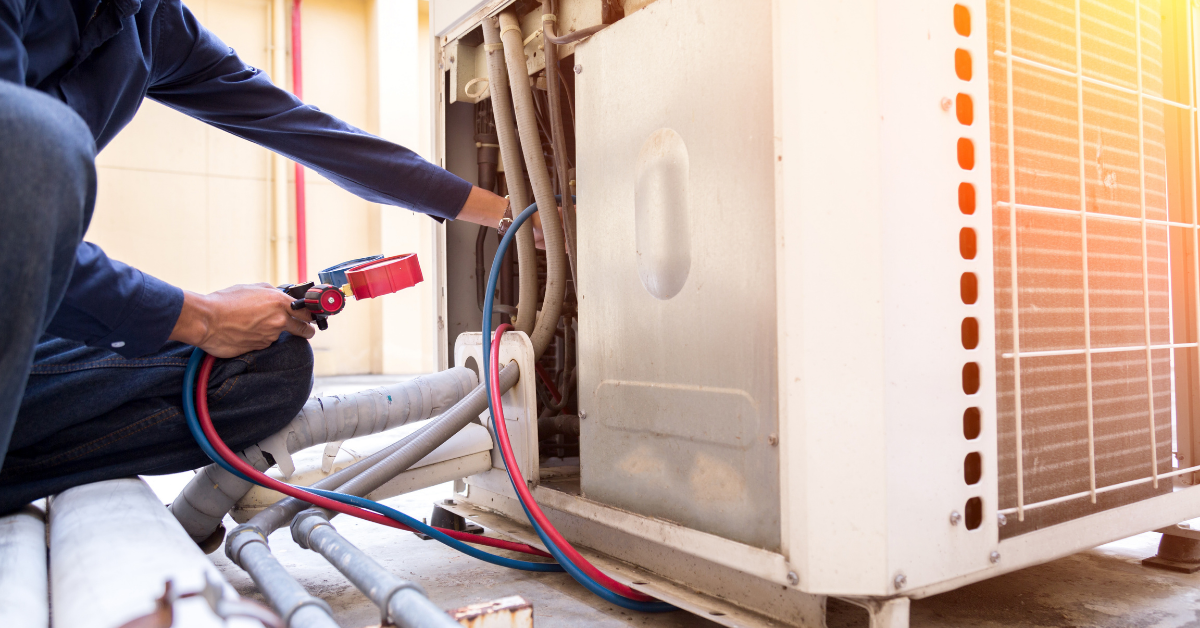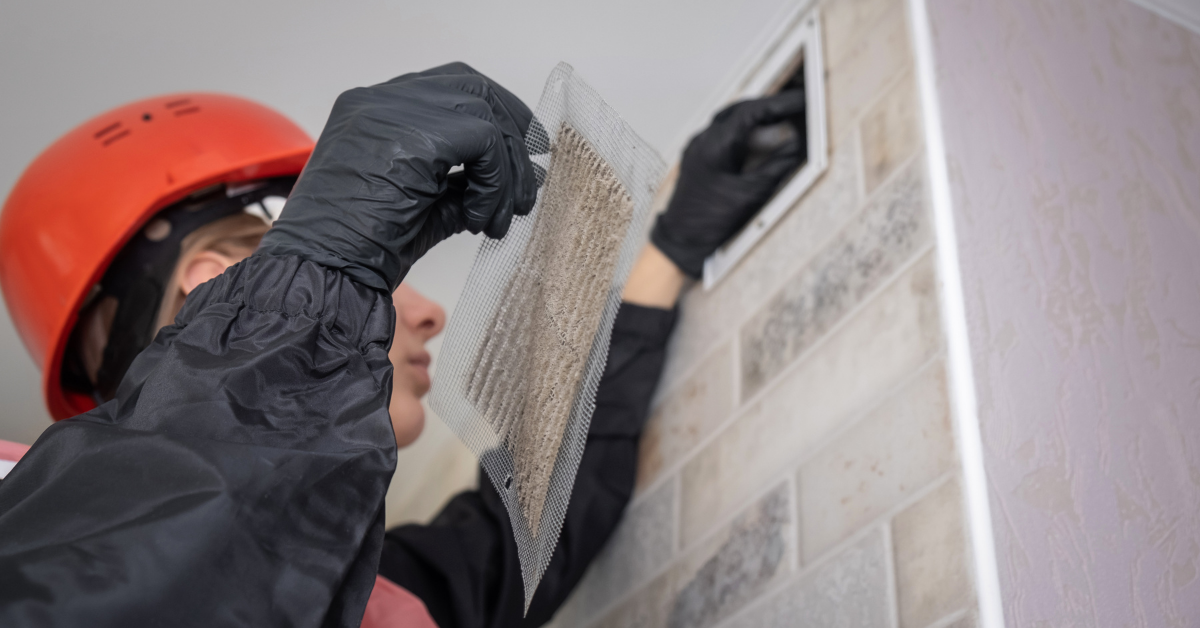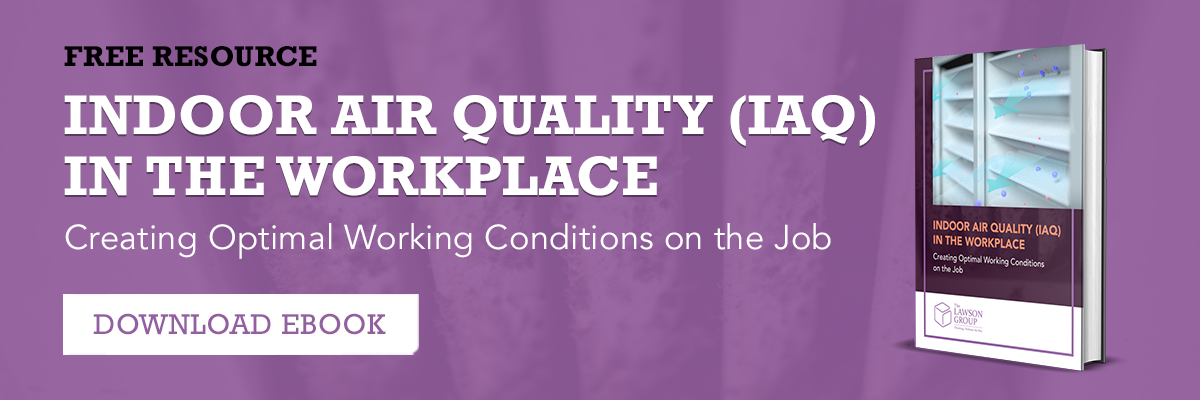Maintaining a healthy and comfortable office environment is crucial to employee health, comfort, and performance. Ensuring that indoor air quality (IAQ) is optimal is a key ingredient in that process.
But as buildings have gotten "tighter" over the years in the interest of energy efficiency and controls on the heating ventilation and air conditioning (HVAC) systems have gotten more complex, the number of IAQ calls we get have ballooned and what we’ve seen in some of these cases may surprise you.
This article will explore the factors affecting IAQ that may result in employee complaints. Read on to learn how you can improve your building's IAQ!
What Is IAQ?
IAQ refers to indoor air quality. It's not only the cleanliness and safety of an interior space's air but also the relative healthiness of that area. IAQ should be every bit as healthy as the air outside the building you occupy, however, that is not always the case.
Providing good IAQ is crucial in the space of all services and businesses, but most notably schools, hospitals, and offices.
IAQ Standards and Considerations
A school needs to have optimal IAQ to keep students and educators alert, comfortable, healthy, and safe.
IAQ in schools is helpful in preventing the spread of airborne viruses. Hospitals tend to have more advanced technology for air purification, especially in operating rooms and critical care patient areas.
Furthermore, OSHA has various guidelines for air contaminants in healthcare, specifically for operating rooms in general and contaminants like waste anesthetic gasses. There are no specific regulations, in most cases, for IAQ in occupied buildings, however, there are many organizations that have recommendations for air quality or guidelines for ventilation rates to assure plenty of fresh air introduction into a building to promote good air quality.
In most cases, building managers are ultimately responsible for the quality of the air within their property, however, given no or few specific regulations that define what “good” or at least “acceptable” air quality looks like, most indoor environments are rarely, if ever, tested to determine how good the air quality really is.
Without these tests, there’s no way to assure employees that the air quality is acceptable so most building managers wait until there are employee complaints about the air quality before they even begin to investigate it and that, in many cases, is where the real problems can start.
 Factors That Contribute to Poor IAQ
Factors That Contribute to Poor IAQ
Several factors can contribute to poor IAQ, many of them related to a building's materials and the way the HVAC systems are installed, serviced, and controlled.
A huge problem in a large number of buildings we survey or test is how the building is cleaned and maintained. On top of all of these things are budgetary constraints that can impact all of these factors.
Mold
Mold is the “classic” issue that we get complaints about all of the time and even after we test, mold is rarely a significant issue in those buildings. Mold is all around us and is present in most buildings year-round.
Most of the time that mold is the same type of mold that is in the air outside the building and it finds its way in through open doors and windows, ventilation systems, and on the feet and clothing of those who come and go from the building.
Most of the time that mold is the same type of mold that is in the air outside the building and it finds its way in through open doors and windows, ventilation systems, and on the feet and clothing of those who come and go from the building.
Mold can become a problem when the mold in the building is NOT the same mold that is outside, the mold levels in the building are significantly higher than they are outside the building or the elevated mold levels inside are the result of water intrusion in the building that has facilitated the growth of harmful mold.
Testing is the only way to identify if there is a problem, how significant it may be and if there is any real risk involved. To that end, mold testing must be done both inside and outside the building and specific species of mold should be identified for comparative purposes.
Building Ventilation
A building's ventilation can also contribute to poor IAQ. Proper ventilation ensures that airborne contaminants are diluted and expunged while a lack of fresh air introduction or a system that doesn’t run continuously can possibly allow odors to accumulate.
Ventilation is also a crucial aspect of preventing mold growth, especially in buildings susceptible to humidity. When temperatures aren't regulated and spaces aren't ventilated, mold spores can spread. Airborne mold spores can cause allergic reactions in some individuals. That's why it's crucial to invest in regular mold testing services.
Dilution is the solution to pollution, meaning the introduction of adequate fresh air reduces the possibility that contaminants will accumulate.
Building Materials
Flooring, in general, can cause problems, especially newly installed flooring. Adhesives used to install carpeting, laminate flooring, and tile can contain solvents that evaporate and have distinct odors that can draw the attention of occupants. All of those same flooring materials can be made with a variety of chemicals that can “off-gas” for years, which can create ongoing complaints or concerns.
Additionally, some of the cleaning and maintenance products used on flooring can cause concerns that are generally brought on by lingering odors. Products like carpet cleaner and spot remover, floor strippers and waxes or finishes on vinyl flooring, and resurfacers and cleaners on wooden floors can all be the source of complaints.
Indoor Equipment
In a minor number of instances, equipment in a building can contribute to IAQ issues. Faulty gas or oil-fired heating equipment and water heaters can emit noxious odors which could result in complaints even if there are no harmful contaminants associated with them. However, improperly operating any oil or gas-fired equipment can also emit carbon monoxide which is colorless and odorless, and in high concentrations can be deadly.
Some high-volume printers, copiers, and old-fashioned blueprint machines can be contributors to poor air quality.
Some buildings that incorporate food service for employees and students can also be problematic relative to odors and can also interfere with the proper operation of the building's HVAC system if they are not designed with each other in mind as they may be fighting for the same air and render each HVAC system ineffective.
There can also be offensive odor issues in a cafeteria environment that can spread to the rest of the building.
Outdoor Pollutants
Even the cleanest indoor spaces can suffer from problems of outdoor pollutants. Outdoor contaminants can enter buildings via ventilation systems, and open doors and windows.
Depending on where the building is located, a building can be subject to all of the contaminants in the neighborhood. This can include industrial plants, automobile traffic, delivery trucks, and the likes of school buses idling in the driveway next to a building or, worse, idling next to the “fresh” air intake for the HVAC system.
We have noted construction and demolition activities adjacent to buildings with complaints where there are odors and even dust infiltrating the building next to the construction activities.
Even maintenance activities to the building in question like painting, lawn mowing, paving, or even roof repair can end up affecting the IAQ of a building if no one takes these things into account.
A critical issue of outdoor contaminants getting into a building can have a lot to do with where the “fresh air intake” may be placed. We have seen them everywhere except where they should be. One very poor source, in particular, is placing an intake at the loading dock of a building.
Most delivery trucks are diesel and they are generally left running, especially in the winter months. If they are located near the fresh air intake, it is a short trip for the exhaust to enter the system and then be distributed throughout the area of the building serviced by that system. We have seen this way too often.
Lack of adequate “walk-off mats” at doorways allow sand and salt to come into the building in the winter months and have that material spread throughout the building making maintenance more difficult, more expensive, and more likely to add additional contaminants to the building.
Potential Consequences of Poor IAQ
Poor IAQ in a building or workplace can increase the risk of developing certain health conditions including respiratory infections and allergic reactions.
Contaminated indoor air can also worsen pre-existing health conditions like asthma.
A large concern regarding poor Indoor Air Quality is the lack of addressing employee concerns about poor air quality in a timely manner. If those concerns are not addressed in a timely manner, employees can become disenchanted and even angry which can lead to lost productivity and a number of Human Resources issues that can affect the overall performance of a business.
Employee health and safety are paramount, so managers must take steps to improve IAQ.
Testing for IAQ Contaminants
IAQ testing measures the levels of known airborne contaminants while measuring the general quality of the air compared to outside. The contaminants tested may include VOCs, radon, mold spores, and carbon dioxide. That said, IAQ tests may vary depending on the building and should be chosen in a manner so as to address the concerns of the occupants, especially those who may be “complaining” about poor air quality.
Testing can be very tricky as you want to diagnose any issue that exists with air quality and it helps to involve employees in that process, but to test for anything and everything employees suggest can often be unnecessary, expensive, and lead to several issues that have little to do with determining if there is a problem that needs to be solved.
When sampling for issues that employees think are the issues and nothing is found, it usually just compounds the problem as those people want to know what is bothering them and if they have been hanging their hat on a specific issue that, through testing, is proven to not be there, they can often get even more upset and that only leads to further frustration.
What Is Good IAQ?
Although there are a number of organizations and governmental agencies that offer “guidelines'' for indoor air quality, there are no regulatory requirements for what makes IAQ good. Therefore, what makes it good becomes quite subjective.
By most measures, the following criteria are important to maintaining good indoor air quality:
- Keeping temperatures at between 65°F and 75°F, depending upon the season
- Maintaining indoor humidity levels between 30% and 60%
- Utilizing appropriately selected air filters in the building HVAC system to remove airborne contaminants
- Establishing a routine maintenance and inspection program for HVAC systems
- Introducing enough outdoor “fresh air” to not only dilute any odors and contaminants present but to attempt to have the air quality in the building, equal to, or better than the air outside the building
If you're unsure whether your building's IAQ qualifies as good, acceptable, or poor, be sure to invest in health and safety consulting services.
Improving a Building's IAQ
Maintaining good IAQ isn't only a manager's responsibility. Employees can also take part in improving and managing IAQ. That said, the first step toward healthier indoor air starts with managers and building owners.
Be sure to follow these steps to improve a building's IAQ:
- A baseline IAQ survey including appropriate testing and routine testing, perhaps on a seasonal basis, can give you great information about how the air quality in the building can vary from season to season and how the controls on your system may need to be modified by the season to maintain good air quality year-round.
- Consider contracting with an outside Mechanical contractor to conduct routine maintenance and inspections of HVAC equipment and have them perform preventive maintenance and filter changes on a routine schedule.
- Educate employees about ways they can contribute to good IAQ and issues they can observe and report on so issues can be corrected immediately and not allowed to get out of hand.
- Maintain IAQ via regular tests, maintenance services, and employee meetings.
 Building Air Quality Action Plans
Building Air Quality Action Plans
Creating a building air quality action plan is an excellent way to tackle IAQ issues. It's easy to feel overwhelmed by IAQ improvement tasks. But having an action plan ready can keep you on track and reduce stress.
This plan should outline air quality testing procedures. It should also provide information about proper building temperature and humidity maintenance.
Having an action plan can help you immediately improve IAQ while also providing a strategy for IAQ maintenance.
Achieving Optimal IAQ in Your Building
Residential indoor air quality tests don't always adhere to commercial health standards. For that reason, it's an excellent idea to invest in workplace health and safety consulting.
The Lawson Group offers services that help employers create a safer and healthier work environment. So, don't keep stakeholders waiting on workplace health and safety updates.
Do you have questions about how you improve your workplace's IAQ? Don't hesitate to contact us today for more information.








